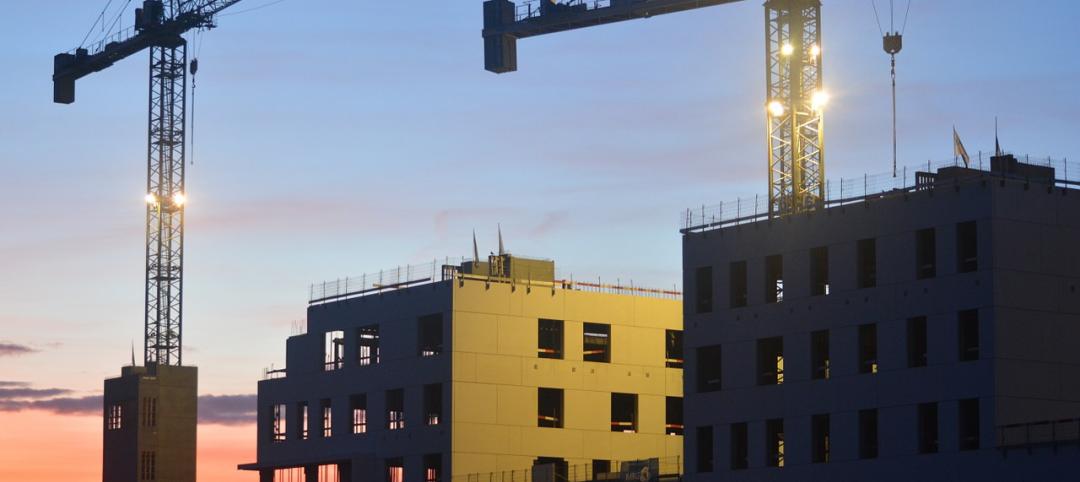Construction employment increased in 329 out of 358 metro areas between April and May as a new survey finds that two-thirds of highway construction firms had at least one crash in the past year at highway work zones they operate. Officials with the Associated General Contractors of America and HCSS, which conducted the survey, urged drivers to slow down and be aware while driving through highway work zones during their summer travels.
“As industry employment increases, it is safe to assume that more people are working in highway work zones that are typically close to moving traffic,” said Ken Simonson, the association’s chief economist. “And it is important to remember that any time your job site is just a few feet away from fast moving traffic, danger is never far away.”
Simonson noted that construction employment expanded in most parts of the country between April and May as coronavirus lockdowns began to ease, according to an analysis of federal employment data the association conducted. He noted that Seattle-Bellevue-Everett, Wash. added the most construction jobs (28,600, 44%) in May, followed by New York City (25,000, 31%) and Pittsburgh, Pa. (22,000, 60%). Click here for the complete analysis.
Many of those workers will be improving highways and bridges in work zones along busy highways this summer, the economist pointed out. That is why the association partnered with construction technology firm HCSS to conduct a nationwide survey of highway contractors on work zone safety. According to that survey, two-thirds of the 200-plus respondents reported at least one crash in the past year involving a moving vehicle at highway work zones, and 33% reported five or more crashes.
Seventeen percent of work zone crashes resulted in injury to construction workers, according to the survey. Meanwhile, drivers and passengers were injured in 44% of those crashes. Drivers and passengers are more likely to be killed in work zone crashes as well. Workers were killed in five percent of work zone crashes while drivers or passengers were killed in 15 percent of those crashes.
The only good news coming out of the survey, Simonson observed, is that coronavirus-related reductions in driving appear to have improved work zone safety. Fifty-eight percent of respondents said changes in highway traffic levels since the coronavirus made work zones safer. But with traffic already back to 90% of pre-coronavirus levels by some estimates, those safety improvements are likely “fleeting,” the economist said.
Association officials called for new measures to protect motorists and workers at highway construction sites. They noted that 24% of survey respondents say a greater police presence at work zones will improve safety. Another 18% say stricter laws against cell phone usage and distracted driving would help. And 17% would like to see greater use of devices like Jersey barriers to protect workers.
Association and HCSS officials said the easiest way to improve work zone safety is to get motorists to slow down and pay attention. They added that motorists should be careful navigating the narrower lanes and sudden lane shifts that are common in work zones. And they urged motorists to obey posted speed limits and keep their eyes on the road and off their phones.
“The importance of work zone safety can be measured by the lives that it saves,” said Steve McGough, the President and CFO of Sugar Land, Texas-based HCSS. “Saving the lives of our greatest asset, our people, has to come first in the planning and execution of work every day.”
Click here for the work zone survey results. And click here for the metro employment data.
Related Stories
Market Data | Feb 10, 2016
Nonresidential building starts and spending should see solid gains in 2016: Gilbane report
But finding skilled workers continues to be a problem and could inflate a project's costs.
Market Data | Feb 9, 2016
Cushman & Wakefield is bullish on U.S. economy and its property markets
Sees positive signs for construction and investment growth in warehouses, offices, and retail
Market Data | Feb 5, 2016
CMD/Oxford forecast: Nonresidential building growth will recover modestly in 2016
Increased government spending on infrastructure projects should help.
Market Data | Feb 4, 2016
Mortenson: Nonresidential construction costs expected to increase in six major metros
The Construction Cost Index, from Mortenson Construction, indicated rises between 3 and 4% on average.
Contractors | Feb 1, 2016
ABC: Tepid GDP growth a sign construction spending may sputter
Though the economy did not have a strong ending to 2015, the data does not suggest that nonresidential construction spending is set to decline.
Data Centers | Jan 28, 2016
Top 10 markets for data center construction
JLL’s latest outlook foresees a maturation in certain metros.
Market Data | Jan 20, 2016
Nonresidential building starts sag in 2015
CDM Research finds only a few positive signs among the leading sectors.
Market Data | Jan 20, 2016
Architecture Billings Index ends year on positive note
While volatility persists, architecture firms reported healthy performance for 2015.
Market Data | Jan 15, 2016
ABC: Construction material prices continue free fall in December
In December, construction material prices fell for the sixth consecutive month. Prices have declined 7.2% since peaking in August 2014.
Market Data | Jan 13, 2016
Morgan Stanley bucks gloom and doom, thinks U.S. economy has legs through 2020
Strong job growth and dwindling consumer debt give rise to hope.















